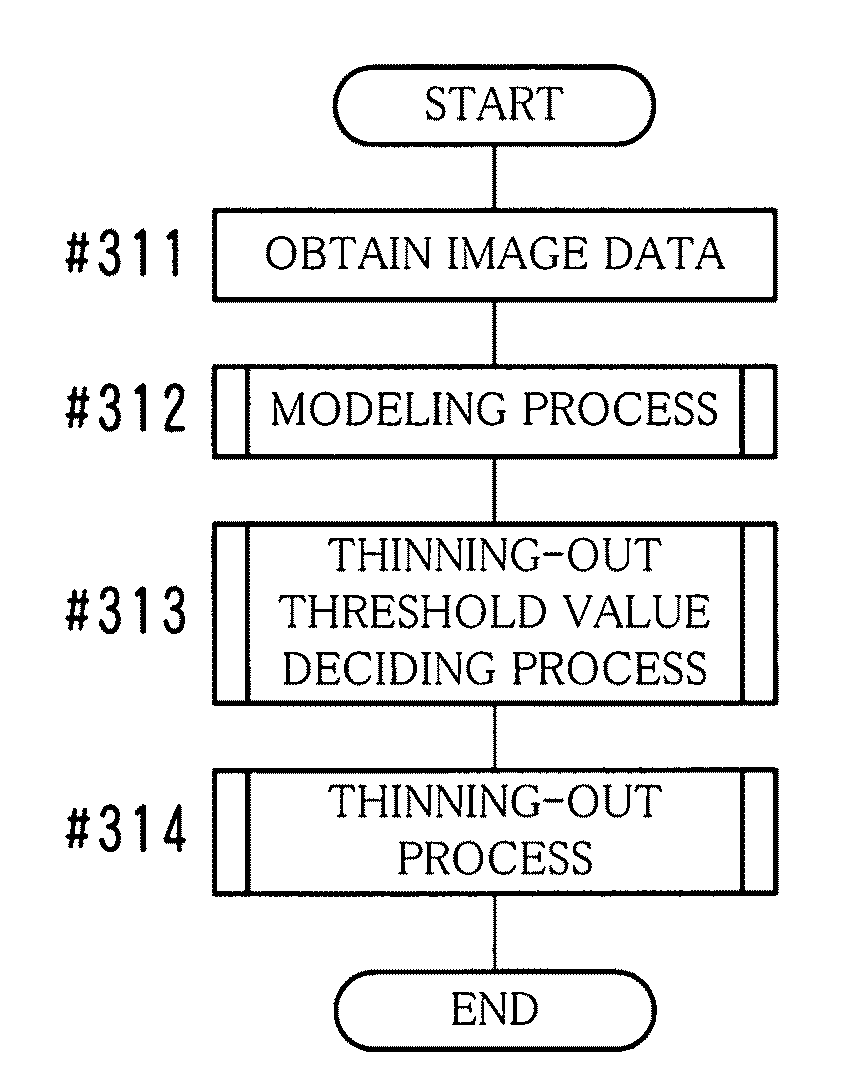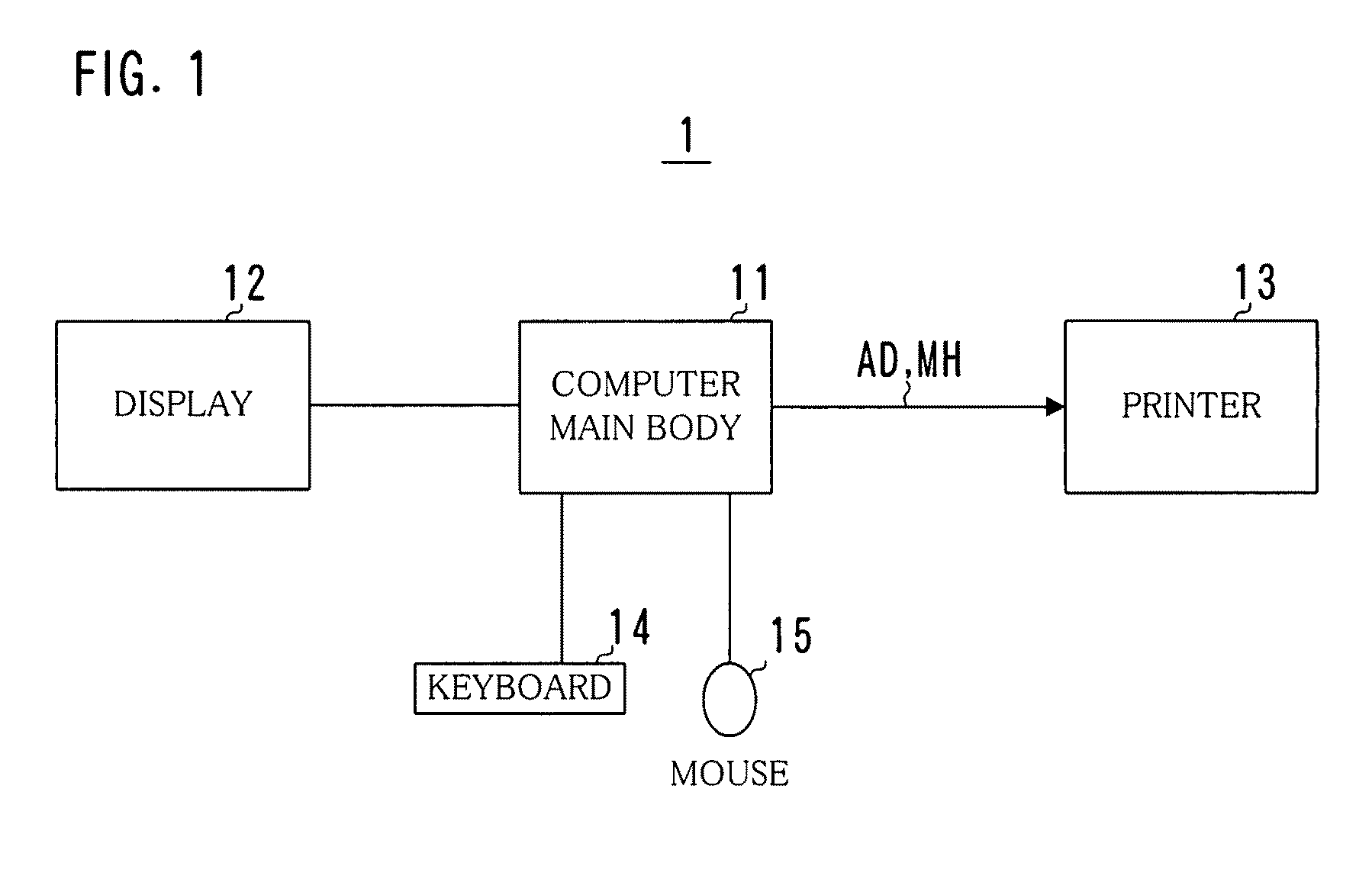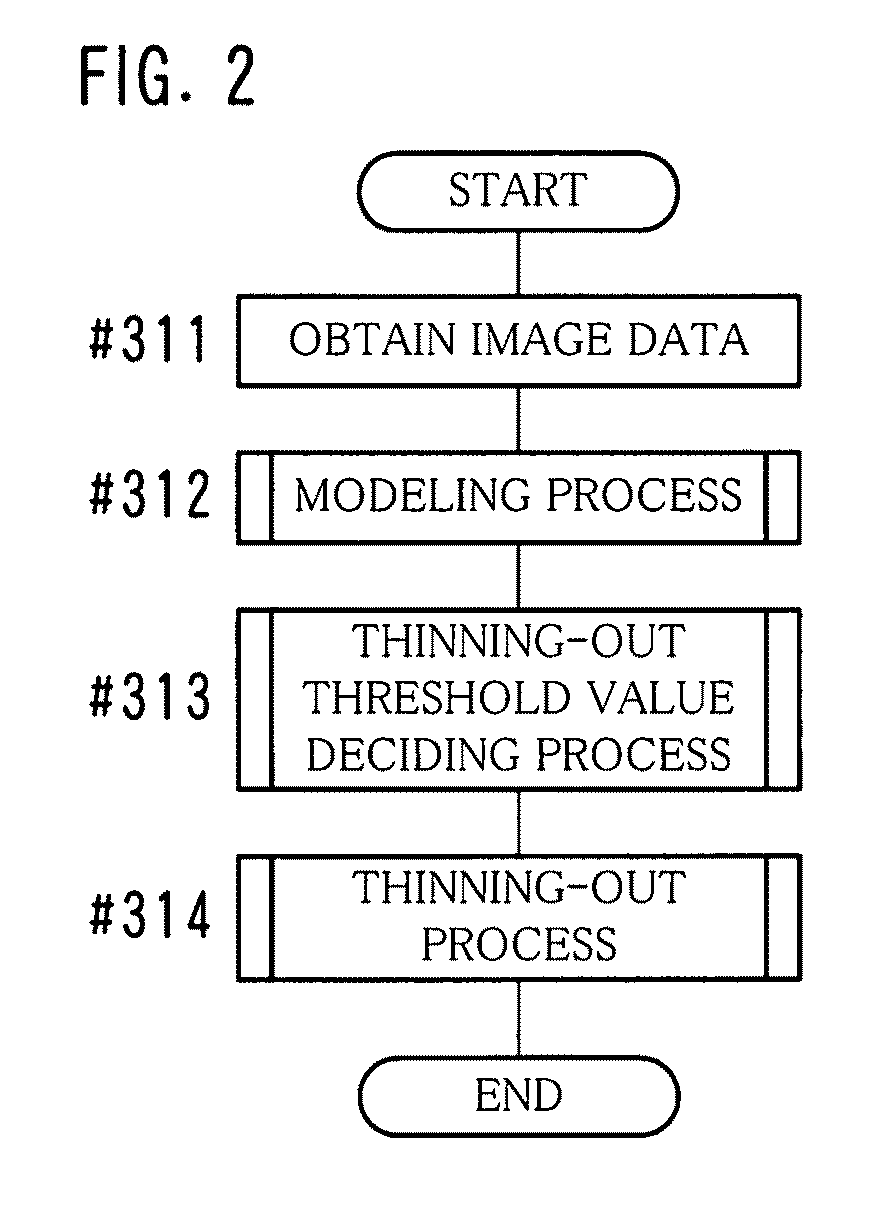Image data compression method and image data compression device
a compression method and image technology, applied in the direction of geometric image transformation, visual presentation, instruments, etc., can solve the problems of increased cost, data quantity may exceed the memory capacity, printing cannot be performed, etc., and achieve the effect of high speed and free space secured in the memory area
- Summary
- Abstract
- Description
- Claims
- Application Information
AI Technical Summary
Benefits of technology
Problems solved by technology
Method used
Image
Examples
first example
[0095]In the present example, a representative value is decided for each of the divided regions TL of the pseudo gradation image data D1, and the representative value is used for generating the compressed image data AD. The representative value as to the divided region TL is a value that represents density values in the divided region TL directly or indirectly. By using the representative value and the dither pattern DP, it is possible to reproduce the original pseudo gradation image or an image that is similar to the same. Hereinafter, the process of the present example will be described by dividing it into items including a “modeling process”, a “thinning-out process”, a “coding process”, a “thinning-out threshold value deciding process” and the like.
[Modeling Process]
[0096]When the modeling process is performed, a representative value of each of the divided regions TL is decided first. Here, the number of dots included in the divided region TL is used as the representative value ...
second example
[0195]In the present example, the case where the compressed image data AD is generated by performing orthogonal transformation on the density value of the image data FD having gradation with respect to each divided region TL will be described. As the orthogonal transformation, discrete cosine transformation (DCT), wavelet transformation or the like can be used. In the present example, the case where the discrete cosine transformation is performed will be described.
[Modeling Process]
[0196]FIG. 18 shows density values of the pixels TP of the divided region TL in the image data FD having 256 levels of gradation. In the modeling process of the present example, each of density values of pixels is shifted in level to the negative side by 128 bits. In other words, “128” is subtracted from the density value of each of the pixels. Thus, the density values are converted into the values shown in FIG. 19.
[0197]Next, the discrete cosine transformation is performed on each of the density values a...
third example
THE THIRD EXAMPLE
[0241]In the present example, the case where the compressed image data AD is generated by performing the Block Truncation Coding (BTC) process on each divided region TL of the image data FD having gradation will be described.
[Modeling Process]
[0242]FIG. 27A shows a gradation image of the divided region TL. First in the modeling process, a region average that is an average of density values of the divided region TL is determined. Pixels having density values that are thicker than the determined region average (high density pixels) are discriminated from pixels having density values that are thinner that the same (low density pixels), and a first average that is an average of density values of thick pixels and a second average that is an average of density values of thin pixels are determined (see FIG. 27B). Furthermore, as shown in FIG. 27C, a virtual dot pattern that is a dot pattern in the case where pixels having density values thicker than the region average are ...
PUM
 Login to View More
Login to View More Abstract
Description
Claims
Application Information
 Login to View More
Login to View More - R&D
- Intellectual Property
- Life Sciences
- Materials
- Tech Scout
- Unparalleled Data Quality
- Higher Quality Content
- 60% Fewer Hallucinations
Browse by: Latest US Patents, China's latest patents, Technical Efficacy Thesaurus, Application Domain, Technology Topic, Popular Technical Reports.
© 2025 PatSnap. All rights reserved.Legal|Privacy policy|Modern Slavery Act Transparency Statement|Sitemap|About US| Contact US: help@patsnap.com



